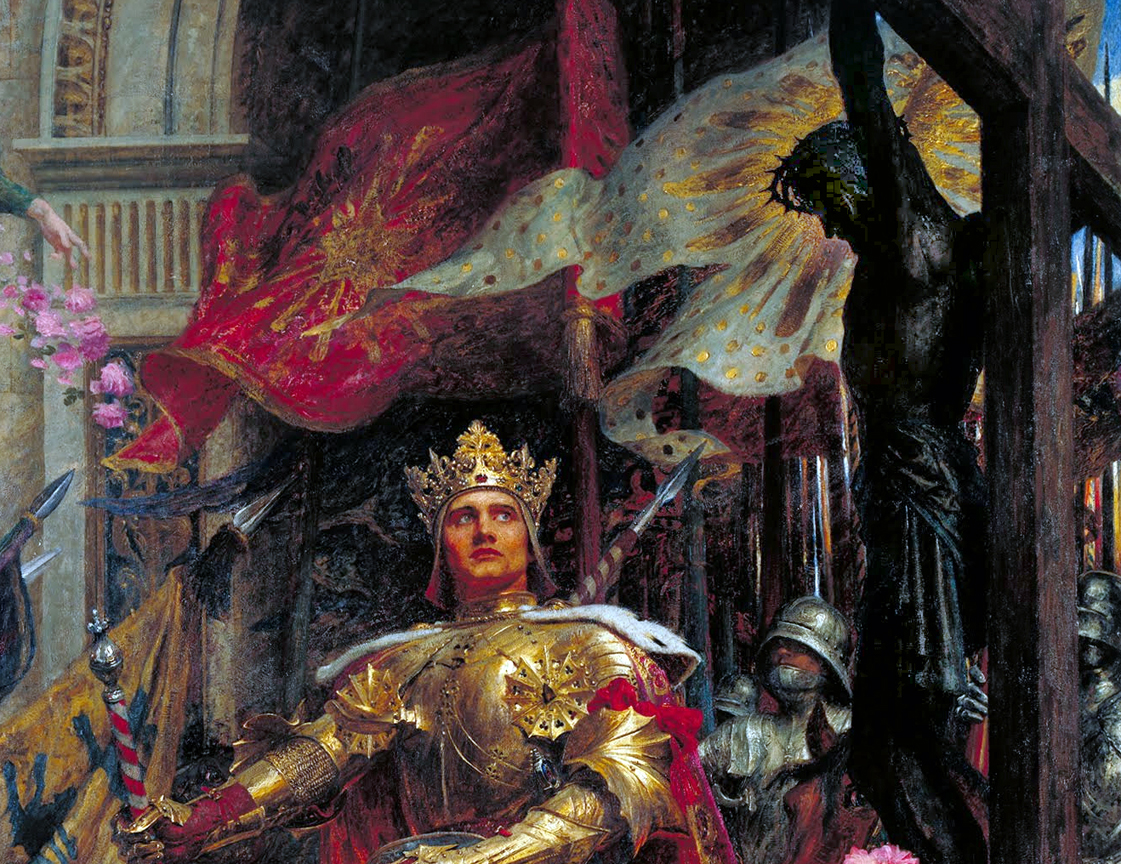Narrative Art
“Narrative art tells a story, either as a moment in an ongoing experience or as a sequence of meaningful events.”
The key term in that definition is the word meaningful. A narrative can picture a single instant which evokes a story and its significance for life — a painting, a sculpture, a photograph — or it can set forth a sequence of events to tell the tale: a novel, a drama, a film. All of the “single instant” works in this virtual museum not only tell or imply a story. They do so by showing us a significant instant: the moment when the face or the act reveals the essence of the personality or the event.
For thousands of years, much art was representational. It showed life as it appeared to the eye and/or the imagination and gave the viewer a glimpse into events ranging from the instantaneous to the eternal. In recent times, however, traditional narrative art fell into disrepute among some artists, art critics, and cognoscenti. Aldous Huxley, in his 1925 essay on Bruegel, succinctly summed up this fall from grace: “The early twentieth century, under the influence of the French, deplores and ignores, in painting, all that is literary, reflective, or dramatic.” However, the denigration of representation art did not stop artists from continuing to work in traditional forms. Today, a century after Huxley wrote those words, both narrative and abstract art continue to thrive.
Without intending to deprecate the virtues of abstract art, I have gathered into my virtual museum some of the masterpieces, as well as lesser-known works, that have caught my interest and helped me think about the human condition as it is rendered in traditional forms. The contents of this museum make no pretensions to all-embracing inclusiveness; and a visitor to these pages may well wish I had included more works from other cultures, artists of color, women, or people from a wider perspective of political, sexual, or religious persuasion.
In future revisions of the Virtual Museum of Narrative Art, I may want to include works not now represented here. The great advantage of an online museum is that it can be altered at will at any time. This flexibility has another virtue: no editors, or editorial assistants, can force the inclusion or exclusion works based on their conceptions of what the virtual museum should or should not include.
The Virtual Museum
A real museum, like all buildings, rests on the ground in a particular space for a particular time. Its physical size limits how much of its collection can be on view at any one time. Typically, major museums can only display a very small fraction of their holdings — currently, about 5% — although they can make their entire collections available on request to visitors who have special research interests.
A virtual museum has no such limitations of space: it can display as many works as the size of the web server allows (this Virtual Museum’s web host, Squarespace, provides unlimited storage space spread across an array of Tier 3 data centers throughout the United States). Furthermore, the virtual museum is not limited to the physical works. Virtual museum curators can gather images from the huge number of images available on the internet and display them in whatever fashion they choose.
The major missing ingredient of a virtual collection, of course, is the absence of the original works themselves. Everyone admits that standing in the presence of a real painting or sculpture has a kind of imaginative resonance that — at least so far — no virtual reproduction can duplicate. And even though a good virtual image can closely match the color and content of the real work of art, a computer monitor, no matter how large, cannot reproduce on screen the impact of the size of the work.
However, a virtual work can embody the essence of every work of narrative art: its significance. I have tried to bring the best digital versions of all the works in the Virtual Museum together so that visitors may appreciate the form, and think over the significance, of artists’ rendering of the stories they tell about the world as they interpret it.




































